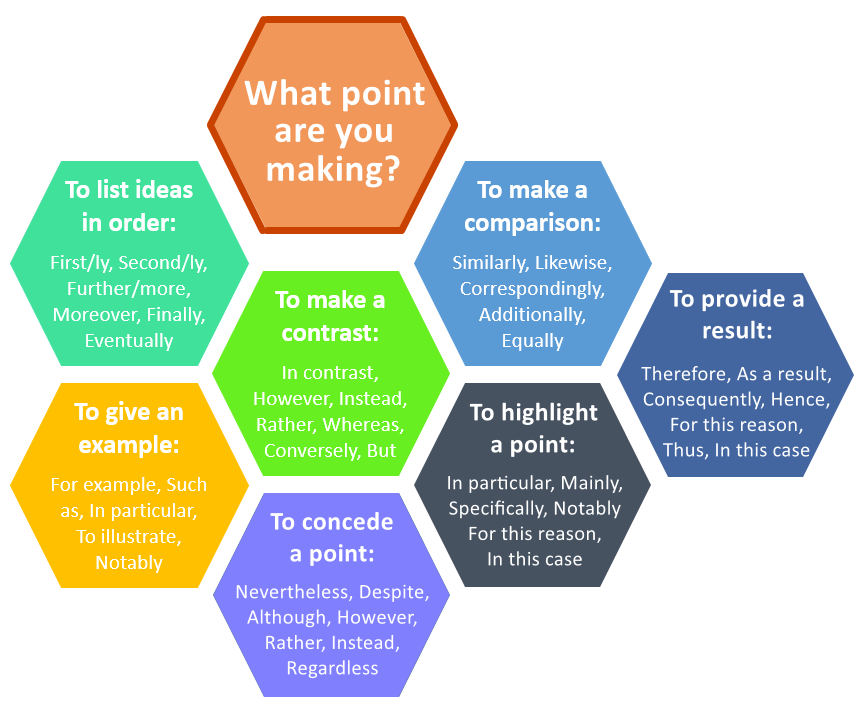Cohesion: Linking Ideas
Good writers link ideas, and signpost to the audience the direction their argument is about to take. Certain words or phrases can signal, add more emphasis, or introduce alternative viewpoints.
Transitions are words, phrases or sentences that make your writing easier to follow. They help by making clear the connections between sentences and paragraphs and indicate the flow of your ideas. They also signal to the reader how to approach the information that follows.
Examples of common transition words include: furthermore, moreover, besides, however, although, consequently, similarly, nonetheless, thus, despite
When to use transitions:
- Between paragraphs – using a transition word or phrase will highlight the relationship that exists between the two paragraphs, for example ‘however’, ‘for example’ and ‘similarly’. These can be used either at the end of the first paragraph or the beginning of the next paragraph.
- Within paragraphs – these tend to be single words or short phrases that help the reader follow your line of thought. For example “Smith and Jones (2008) propose that academic writing style should always be adhered to at tertiary level. However,….”
Avoid unnecessary words and long complicated sentences. Transition words are a great way to keep your sentences well-structured and ensure your expression flows.


